Our News
10/01/2025
EU-MDR certified!
Exciting news! We are proud to announce that OSAsense is CE certified, under the Medical Device Regulation (MDR) (class lla).
What is MDR? The MDR is an EU-wide regulation that standardises and improves safety and performance requirements for medical devices, such as our innovative OSAsense sleep apnoea exclusion diagnostics.
What does this certification mean for us? The Class IIa CE certification means OSAsense has undergone rigorous evaluation and meets the highest quality and safety standards. It allows us to confidently maintain our cutting-edge solution in the European market and enables us to make a significant impact in healthcare.
Big thanks to Evidencio, the incredible team behind this achievement! Evidencio has provided rapid MDR certification in a quick, easy and cost-effective process. The collaboration with Evidencio will ensure that OSAsense can quickly add new indications to its service palette in the same way in the near future.
Read the original post here.
01/01/2025
OSAsense has joined forces with Medicamus!
From 1 January 2025, OSAsense and Medicamus the regional organisation for GPs in the Harderwijk region have joined forces. Through this cooperation, all affiliated GPs can give their patients a possibility to exclude possible sleep apnea. This at no extra cost for the patient.
This unique cooperation combines the expertise of OSAsense with the extensive network of Medicamus in the Harderwijk region. From 1 January 2025, GP practices affiliated with Medicamus will have the opportunity to start using OSAsense, significantly increasing the accessibility of essential care.
This joint effort is not only aimed at excluding sleep apnoea, but also at providing practical solutions for GP practices. The joining of forces between OSAsense and Medicamus is a clear demonstration of our joint mission to provide high-quality care and innovative solutions to the healthcare providers we serve. We look forward to working together towards a healthier future, with prevention and accessibility at its core.
Stay tuned to our joint efforts and discover how OSAsense and Medicamus samenwerken are working together to promote health and well-being.
04/12/2023
Once again certified for ISO 27001 and NEN7510! Commitment to Data Security and Quality in Healthcare
OSAsense, you have once again achieved the ISO 27001 and NEN7510 certifications, confirming our commitment to high quality data security and quality standards in the healthcare sector.
The ISO 27001 certification attests to our robust information security systems, while the NEN7510 certification specifically addresses the healthcare sector, meeting the highest standards for information security and quality management.
These renewed certifications reflect OSAsense's ongoing commitment to protecting health data and maintaining the highest standards in delivering our services. We are proud of this achievement and continue to strive for outstanding data security and quality of care.
Stay tuned for our ongoing efforts to ensure your health and well-being. At OSAsense, we are committed to safety, quality and the best care for you.
16/11/2023
Winner Care Innovator of the Year 2023
In a competition with stiff competition, our own medical director Dr. Rick Pleijhuis captured the title "Healthcare Innovator of the Year 2023" at the Mobile Healthcare Congress, with nearly half of the votes. The award was given for, among other things, his low-threshold and effective approach to measuring sleep apnea using only a watch and finger sensor.
This innovation is based on a smart watch with a special sensor worn on the finger while sleeping. This makes it easier for potential sleep apnea patients to sleep comfortably while the watch collects important data.
What sets OSAsense's solution apart is its practicality. The data collected is used to generate detailed reports, allowing general practitioners to respond quickly and effectively. Whether referring patients to a sleep center or ruling out sleep apnea, Dr. Rick Pleijhuis's innovation provides a useful tool for medical practice.
By winning this award, it underscores the value of Dr. Rick Pleijhuis's contribution to improving healthcare. We congratulate him on this well-deserved recognition and look forward to the continued impact of this practical solution in healthcare.
26/06/2023
OSAsense has joined forces with Medrie!
From July 2023, general practices affiliated with Medrie, regional organization for general practitioners in the Flevoland, Hardenberg and Zwolle regions, can also start using OSAsense.
OSAsense has joined forces with Medrie. Together we are taking an important step forward by jointly offering advanced exclusion diagnostics for sleep apnea.
This strategic partnership combines OSAsense's expertise with Medrie's extensive network in the aforementioned regions. As of July 2023, general practices affiliated with Medrie will have the opportunity to use this innovative exclusion diagnostics, significantly increasing the accessibility of this important service.
This initiative aims not only to exclude sleep apnea, but also to provide practical solutions. GP practices will benefit from the implementation of OSAsense technology, enhancing diagnostic capabilities and ensuring an improved care experience for patients.
The joint commitment of OSAsense and Medrie is a clear manifestation of our shared mission to provide high-quality care and innovative solutions to the communities we serve. We look forward to working together to build a healthier future with prevention and accessibility at its core.
Stay tuned to our joint efforts and find out how OSAsense and Medrie are working together to advance the health and well-being of our communities.
18/02/2022
Quest for improved screening for obstructive sleep apnea in atrial fibrillation
This study focuses on improving screening for obstructive sleep apnea (OSA) in atrial fibrillation (AF), due to the under-diagnosed nature of OSA despite strong associations. AF is the most common cardiac arrhythmia worldwide and causes serious complications. The aim is to find an innovative method for more effective OSA identification in AF patients.
In the Netherlands, there were 362,700 people with AF in 2019, with annual increases. Effective AF treatment requires identification of risk factors, including OSA. Untreated OSA predicts AF treatment failure.
Current OSA screening methods, such as questionnaires, prove inadequate according to a problem analysis. A literature review and expert interviews show OSAsense, a pulse oximetry method, as a promising innovation. An implementation pilot showed the cost-effectiveness and patient-friendliness of OSAsense, with fewer unnecessary referrals to sleep clinics.
Experts and patients consider OSAsense the best innovation for OSA screening in AF patients. Further implementation is supported, with emphasis on integrated follow-up and coordination by nurse specialists at outpatient AF and sleep disorders clinics. OSAsense offers a safe, cost-effective and patient-friendly approach, with potential for national expansion to other care pathways and AF outpatient clinics.
Click here for the entire article
01/11/2020
OSAsense collaborates with HOOG!
From November 2020, GPs in the Apeldoorn, Zutphen and Oost-Achterhoek regions who are affiliated to HOOG will be able to use OSAsense. Through this collaboration, all affiliated GPs can exclude their patients for sleep apnoea. This at no extra cost to the patient.
This unique collaboration combines the expertise of OSAsense with HOOG's extensive network in the aforementioned regions. Since November 2020, GP practices affiliated with HOOG will have the opportunity to use OSAsense, significantly increasing the accessibility of essential care.
This joint effort is aimed not only at excluding sleep apnoea, but also at providing practical solutions for GP practices. The joining of forces between OSAsense and HOOG is a clear demonstration of our joint mission to provide high-quality care and innovative solutions to the healthcare providers we support. We look forward to working together towards a healthier future, with prevention and accessibility at its core.
Stay tuned to our joint efforts and discover how OSAsense and HOOG are working together to promote health and well-being.
03/02/2020
OSAsense at eHealth in MST
We were at MST's E-health and innovation market on January 30!
During the E-health and innovation market on January 30, visitors and employees could learn about technological innovations at MST.
During the market various studies were shown and there was the possibility to ask questions to the researchers.
We were also present during this market to answer questions about OSAsense and our services.
Watch a recap of the E-health market at MST here.
01/01/2020
OSAsense has joined forces with Dokter Drenthe!
From January 2020, GP practices in the Drenthe region affiliated with Dokter Drenthe can also start using OSAsense.
OSAsense has joined forces with Dokter Drenthe. Together, we are taking an important step forward by offering advanced exclusion diagnostics for sleep apnoea to GP practices in this region.
This strategic partnership combines OSAsense's expertise with Dokter Drenthe's extensive network within Drenthe. From July 2018, member GP practices will have the opportunity to implement this innovative exclusion diagnostics, significantly increasing the accessibility of this essential healthcare service.
This initiative aims not only to exclude sleep apnoea, but also to provide practical solutions. GP practices benefit from the advanced OSAsense technology, which enhances diagnostic capabilities and contributes to an improved care experience for patients.
The joint commitment of OSAsense and Doctor Drenthe is a clear reflection of our shared mission to provide high-quality care and innovative solutions to the communities we serve. We look forward to working together towards a healthier future, with prevention and accessibility of care at its core.
Stay tuned to our joint efforts and find out how OSAsense and Dokter Drenthe are working together to improve health and well-being in our communities.
01/01/2019
GP practices in Friesland can now also start using the OSAsense!
From September 2019, GP practices in Friesland can also start using the OSAsense.
Together, we will take an important step forward by jointly offering advanced exclusion diagnostics for sleep apnoea.
This strategic partnership combines OSAsense's expertise with Friesland's extensive network. From September 2019, GP practices in Friesland will have the opportunity to use this innovative exclusion diagnostics, significantly increasing the accessibility of this important service.
This initiative aims not only to exclude sleep apnoea, but also to provide practical solutions. GP practices benefit from the advanced OSAsense technology, which enhances diagnostic capabilities and contributes to an improved care experience for patients.
30/08/2018
OSAsense: a new initiative in the battle against sleep apnea
GPs from Twente want to use the new research method OSAsense to determine more easily and cheaply whether someone is suffering from sleep apnea. According to research, 300,000 people are still walking around with the condition in the Netherlands without their knowledge.
With obstructive sleep apnea, the tongue falls at the back of the throat at night, causing the windpipe to be closed. This causes a dip in the oxygen content. The brain will get active to resolve this. As a result, you do not get into a deep sleep and people are often tired or very sleepy during the day.
The Osasense is a watch with a disposable sensor that measures the oxygen level in the blood. If that level dips five times per hour or more often in a night, this indicates sleep apnea. As soon as a doctor suspects sleep apnea in a patient, he connects the watch to the computer and enters some information from the patient. The patient takes the watch home, goes to sleep with it and returns it to the doctor the next day. The doctor then carries out an extensive analysis based on the questionnaire and the nocturnal measurements. Within a few minutes he can determine whether someone has a high chance of sleep apnea or not.
GP Veldhuis is happy with the Osasense. Heikens GP practice in Almelo, where Veldhuis works, has been using this method for a few months now, just like sixty other GPs in Twente. He says that this a very low-threshold study. It's fast and cheap and it costs around 140 euros . This means you will investigate earlier.
https://www.tubantia.nl/regio/twentse-methode-moet-patient-met-slaapapneu-helpen~a5d2464c/
25/08/2018
OSAsense continuous monitoring
Use of high-resolution pulse oximetry to timely detect clinical deterioration during sepsis
Recently, the sepsis research group in Groningen has been engaged in a study to test whether signs of clinical deterioration in patients with (severe) infection could be detected more quickly by means of a "wearable. The idea is based on the current ongoing research led by Jan ter Maaten, titled "SepsiVit." In this research, vital parameters are measured continuously. By analyzing the course of vital parameters, rather than looking at point measurements, a deteriorating clinical condition can be detected earlier (Quinten, Scand J Trauma Resusc Emerg Med, 2018).
However, a disadvantage of continuous measurement of vital signs is that it limits patient mobility by being connected to a bed-side monitor 24 hours a day. The current study is testing whether the "OSAsense S18," a watch developed for ambulatory diagnosis of sleep apnea by high-resolution (50Hz) continuous pulse oximetry in the first-line, could take over this function from the monitor.
In collaboration with the Department of Technical Medicine at the University of Twente, the raw data obtained through the watch will be analyzed with the aim of developing an algorithm capable of early detection of a deteriorating clinical condition. The research team, which further consists of Tycho Olgers, Jack Ligtenberg, Vincent Quinten and Hjalmar Bouma in collaboration with DiagnOSAS B.V., aims to develop a wearable device for early detection of clinical deterioration in patients with (severe) infection. Findings from this study may also be relevant for clinical patients without infections, or for patients discharged home, with or without hospital care, where additional monitoring is desired.
https://www.acuteinternisten.nl/osasense-continu-monitoring/
01/07/2018
OSAsense has joined forces with GHC!
From July 2018, GP practices in the Groningen region affiliated with GHC can also start using OSAsense.
OSAsense has joined forces with GHC. Together, we are taking an important step forward by offering advanced exclusion diagnostics for sleep apnoea to GP practices in this region.
This strategic partnership combines OSAsense's expertise with GHC's extensive network within Groningen. From July 2018, member GP practices will have the opportunity to implement this innovative technology, significantly increasing the accessibility of this essential healthcare service.
This initiative not only focuses on early exclusion of sleep apnoea, but also offers practical solutions. GP practices benefit from the advanced OSAsense technology, which enhances diagnostic capabilities and contributes to an improved care experience for patients.
The joint deployment of OSAsense and GHC is a clear reflection of our shared mission to provide high-quality care and innovative solutions to the communities we serve. We look forward to working together towards a healthier future, with prevention and accessibility of care at its core.
Stay tuned to our joint efforts and find out how OSAsense and GHC are working together to improve health and well-being in our communities.
01/06/2018
OSAsense collaborates with THOON & FEA
Since May 1, 2018, OSAsense and THOON & FEA, the regional organizations for general practitioners in the regions of Enschede, Hengelo, Almelo, have joined forces. Through this collaboration, all affiliated general practitioners can screen their patients for sleep apnea. This at no extra cost to the patient.
This unique collaboration combines the expertise of OSAsense with the extensive network of THOON/FEA in the mentioned regions. Since May 1, 2018, GP practices affiliated with THOON/FEA will have the opportunity to use OSAsense, significantly increasing the accessibility of essential care.
This joint effort is aimed not only at excluding sleep apnea, but also at providing practical solutions for general practices. The joining of forces between OSAsense and THOON/FEA is a clear demonstration of our shared mission to provide high-quality care and innovative solutions to the healthcare providers we serve. We look forward to working together to build a healthier future with prevention and accessibility at its core.
Stay tuned to our joint efforts and find out how OSAsense and THOON/FEA are working together to advance health and wellness.
OSAsense in the spotlight
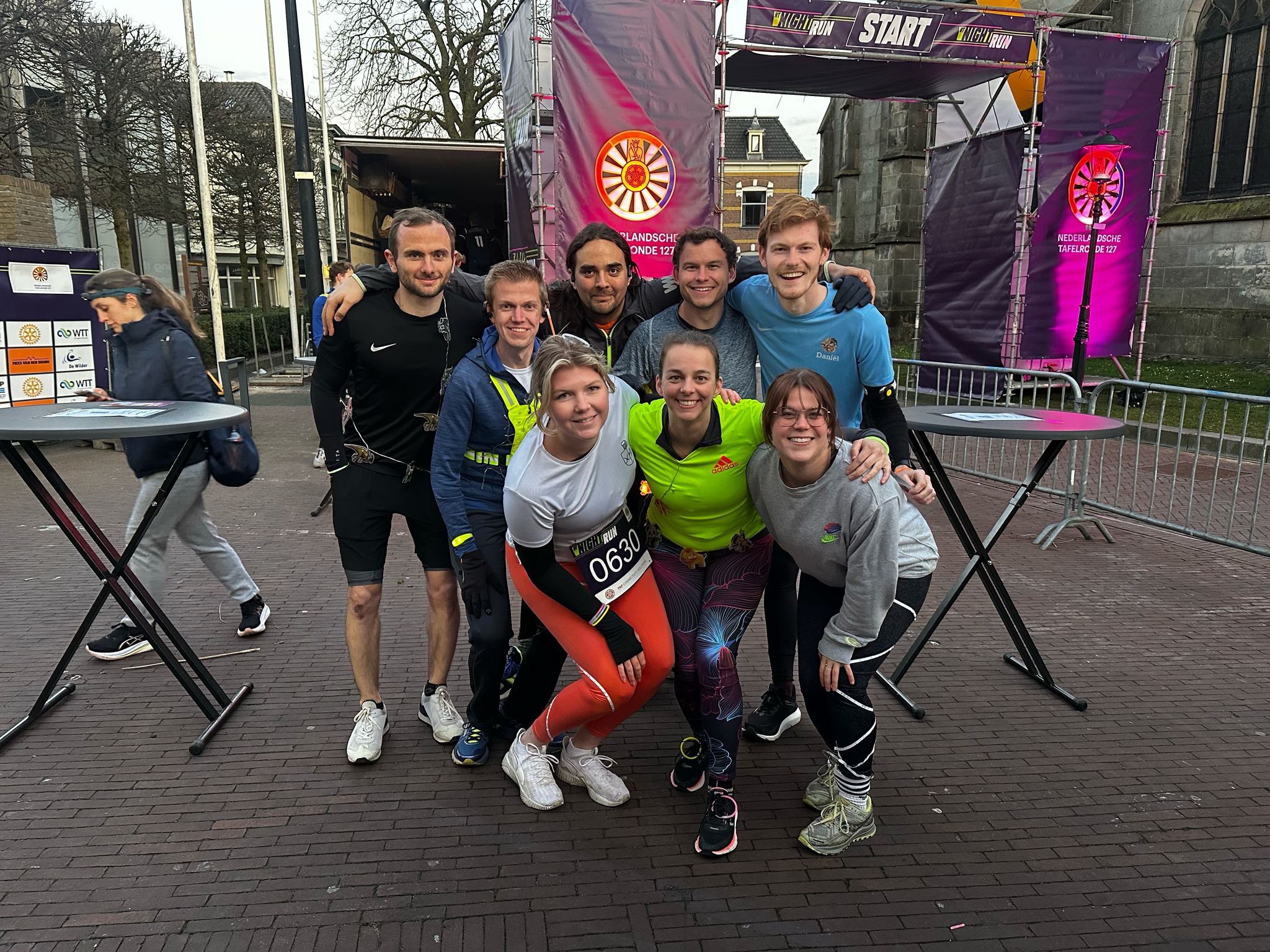
14/03/2025
OSAsense sponsors Nightrun Haaksbergen
Friday evening 14 March 2025 finally saw the day: the Nightrun in Haaksbergen! With enthusiasm and sporting energy, OSAsense employees were at the start line, ready to take on the challenge of 5 or 10 kilometres. But this evening was about more than just running - we ran for a good cause.
The charity we ran for was bike buddies. Fietsmaatjes makes it possible for everyone to cycle! They do this by pairing volunteers with people who can no longer cycle independently. Usually these are people who have difficulties with movement, hearing, sight, balance or cognition (such as dementia). As a result, people affected by this move more and feel less lonely! For more information, visit the fietsmaatjes website.
With every step we took, we not only pushed our own limits, but also contributed to a wonderful initiative.
Thank you to all runners, supporters and sponsors - you make this possible!
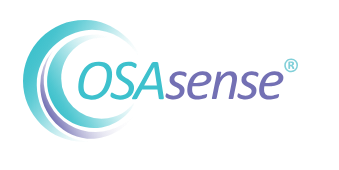
15/01/2025
Track sleep apnea faster and thus improve treatment for cardiac arrhythmias
GP Kasper Veldhuis advocates the use of the OSAsense. It has helped him diagnose common complaints such as fatigue, dyspnoea and palpitations more quickly and make more targeted referrals.
Kasper Veldhuis, a general practitioner in Arnhem, contacted the editors of Huisartsgeneeskunde himself after reading an article on atrial fibrillation, which briefly discussed the increasing attention to the role of sleep apnoea in the development of this cardiac arrhythmia.
Veldhuis, who has extensive experience with the screening tool OSAsense and a keen interest in lung disorders, was keen to explain more about this important topic.
OSAsense is low-threshold and costs little for the GP, while the screening is fully reimbursed by health insurers. Using this tool can lead to faster diagnosis, more effective treatment of sleep apnoea and thus better outcomes for patients with cardiac arrhythmias.
Veldhuis is enthusiastic about the benefits of OSAsense, especially the cost and time savings for both patients and healthcare providers. He expects sleep apnea screening to play an important role in cardiovascular risk management in primary care.
Click on the link to read more.
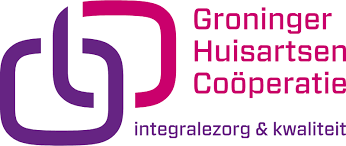
21/12/2023
Care pathway OSAS: Manual updated - GHC
With the OSAS care pathway, as a general practitioner you can rule out that a patient has OSAS (sleep apnea). This is done with a pulse oximetry measurement with the OSAsense watch. The patient does this nocturnal measurement himself in the home setting. In addition, the patient fills out a questionnaire online. Diagnostics via OSAsense is patient-friendly, quick, low-threshold, relatively inexpensive and intended only for exclusion diagnostics. The OSAS care pathway is not a screening: referral to a sleep center remains necessary to demonstrate OSAS.
Read more about OSAsense here in the article written by GHC Groningen.
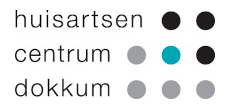
16/02/2023
OSAsense deployment - Dokkum GP center
The Dokkum GP Center now offers diagnostics for Obstructive Sleep Apnea Syndrome (OSAS) using OSAsense. This service includes a validated online questionnaire and an overnight saturation measurement with a special watch-shaped saturation meter.
The OSAsense algorithm detects sleep apnea with high sensitivity (~100%) and specificity (>70%). By using OSAsense before referring patients to a sleep center, unnecessary and costly investigations can be avoided for low-risk patients, while patients at significant risk can be quickly and effectively referred for diagnosis and treatment. If you experience symptoms such as snoring with breath stops, it is recommended that you make an appointment with your primary care physician.
Read more about OSAsense here in the article written by the Huisartsencentrum Dokkum.
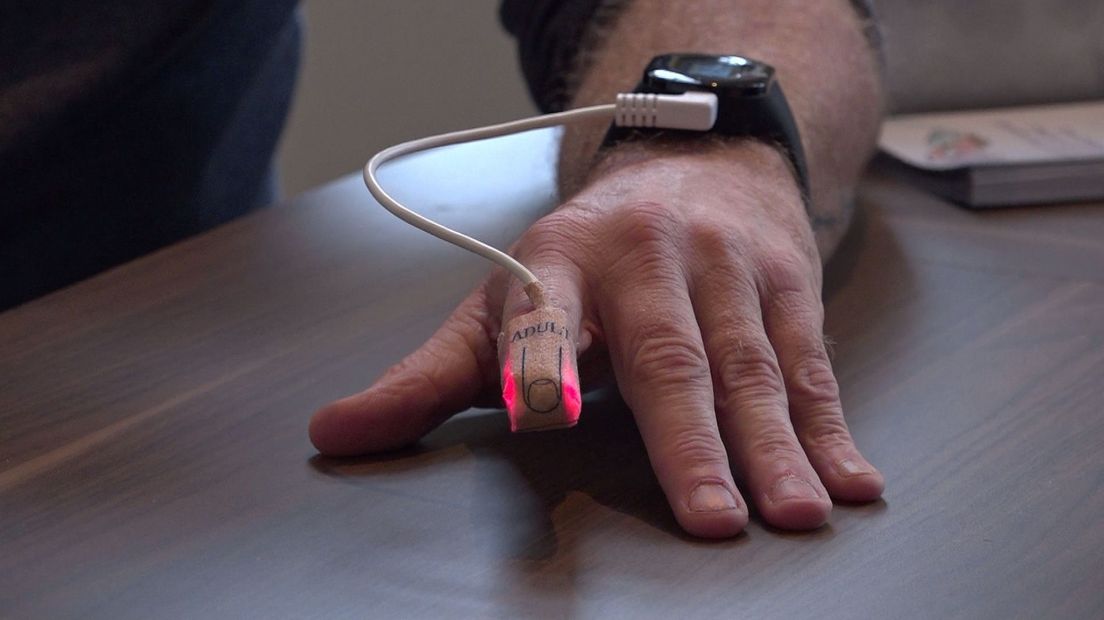
14/01/2023
OSAsense practice example - Federation of Medical Specialists
OSAsense is an innovative method to screen patients for obstructive sleep apnea (OSA) quickly, easily and cost-effectively, with the goal of more targeted patient referral. Untreated OSA can cause serious health damage. Traditional referral to specialized sleep centers is labor-intensive and costly, with a significant percentage of incorrect referrals. OSAsense provides (family) physicians with a screening tool that reduces the number of unnecessary referrals by approximately 70% by reliably identifying patients. The innovation has led to faster diagnoses, better utilization of sleep centers, decreasing waiting lists and significant cost savings.
The development of OSAsense began with the identification of crucial parameters for determining breath-hold during sleep. It resulted in a validated saturation monitor that continuously measures oxygen levels. OSAsense has already screened over 15,000 patients since 2015, with over 400 primary care physicians involved and collaborations with health insurance companies. The innovation has led to publications in scientific journals and wide acceptance in healthcare.
Internist-allergist/immunologist Rick G. Pleijhuis emphasizes the personal development the project has provided him, from organizational skills to collaboration and leadership. The project has broadened his training as a medical specialist and continues to benefit him.
Next steps include using OSAsense more broadly in primary care and exploring applications for other conditions. Stakeholders involved include health insurers, primary care practices, colleges and medical centers.
Read more about OSAsense here in the extensive article written by the Federation of Medical Specialists.
01/06/2020
Care pathway OSAS with OSAsense - Doctor Drenthe
With the care path OSAS, you can easily rule out that a patient has OSAS (sleep apnea). This is done with a pulse oximetry measurement with the so-called OSAsense watch. The patient takes a nocturnal measurement in the home situation himself. In addition, he or she fills out a questionnaire online. For participation in this care path, you receive a reimbursement.
Read more about OSAsense here in the article written by Doctor Drenthe.
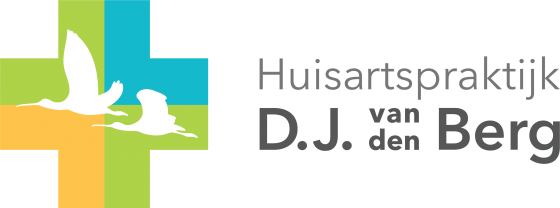
16/05/2020
OSAsense deployment - GP practice D.J. van den Berg
OSAsense offers a simple screening for sleep apnea in which patients fill out an online questionnaire at home and sleep one night with the OSAsense S18 saturation meter, which detects breath stops by measuring blood oxygen levels. The measured data is analyzed and fed back to the primary care physician, who refers patients to a sleep center if necessary. Complaints such as fatigue, snoring and difficulty concentrating can indicate sleep apnea, whose risk factors range from obesity to sleep position. The OSAsense screening is free at the doctor's office and is reimbursed by health insurance companies, with no deductible. Scientific research confirms the safety and effectiveness of the OSAsense method.
Read more about OSAsense here in the article written by Huisartsenpraktijk D.J. van den Berg.

10/03/2020
Smartwatch gives GPs grip on apnea - RTV Noord
GPs in Groningen are making extensive use of OSAsense, a device that can rule out apnea. This innovative tool, invented by doctors in Groningen and further developed by the University of Twente and the Medisch Spectrum Twente, acts as a smartwatch that patients wear while they sleep. Apnea, in which breathing stalls during sleep, can lead to oxygen dips and increased heart rate. OSAsense detects these dips through a patch on the finger that measures blood oxygen levels and heart rate.
Previously, patients with suspected sleep apnea were immediately referred to the hospital for extensive sleep studies with sensors and electrodes. OSAsense offers general practitioners an effective preliminary examination, reducing unnecessary referrals by 30 percent, according to general practitioner and co-inventor Tjitte Verbeek. The watch can rule out apnea with certainty, reducing unnecessary waiting lists for sleep centers.
Patients like Erik Vos are experiencing the benefits of OSAsense, where the watch can determine with certainty after a night's sleep whether further apnea examinations are needed. This efficient preliminary examination has convinced more than 120 general practices in Groningen and also in Twente to integrate OSAsense, and further expansion to Friesland and Drenthe is planned. The application falls within the basic reimbursement of health insurances, which which means no additional costs for patients. OSAsense offers not only convenience and efficiency for general practitioners, but also reassurance and faster diagnosis options for patients with sleep-related complaints.
Read more about OSAsense here in the extensive article written by RTV Noord.

25/11/2019
Sleep apnea patients treated faster thanks to OSAsense - Universiteit Twente
OSAsense, developed by students of Technical Medicine at the University of Twente in collaboration with the Medisch Spectrum Twente (MST), is a pioneering tool that enables accelerated, simplified diagnosis of sleep apnea. The innovation consists of a saturation meter, a watch-like device for data storage and a digital questionnaire that allows patients to perform their own sleep studies at home. Michel Eijsvogel, pulmonologist at MST, emphasizes that OSAsense has reduced the number of unnecessary referrals to specialists by thirty percent.
Sleep apnea affects six to 10 percent of adults, with breathing frequently stalling during sleep. Previously, patients were often referred to specialists without a thorough examination option at the primary care physician's office. OSAsense has optimized this process by giving patients a saturation meter and a watch to take home for an overnight examination. The saturation meter measures the number of breaths per hour, with blood oxygen levels falling during these stops. Combined with a digital questionnaire, OSAsense provides the family physician with enough data for reliable screening for sleep apnea.
What sets OSAsense apart is not only the improved referral to specialists, but also the ability for family physicians to initiate treatments themselves in mild cases or low-risk sleep apnea.
Read more about OSAsense here in the extensive article written by the University of Twente.
27/06/2019
OSAS screening in primary care
In 2017, over 100,000 patients received a referral due to sleep apnea syndrome (OSAS), but one-third of them were ultimately found not to have OSAS. At the same time, the majority of OSAS patients still walk around undiagnosed. So there is a need for better preselection of patients. Dutch research shows that OSAS can be easily, safely and easily excluded in general practice with a questionnaire and nocturnal oxygen measurement.
Read more about OSAsense here in the article written on the GP and Science website.
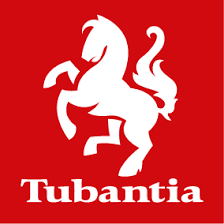
11/06/2019
OSAsense measurement allows Pascal to live normally again - Tubantia
ALMELO/HAAKSBERGEN - The OSAsense measurement method from Haaksbergen to measure sleep apnea in a low-threshold manner was used much more by general practitioners last year than previously expected. Across Twente, 1,674 people were screened for sleep apnea using the innovative method.
11/06/2019
Sleep problems detected by smart thimble
The OSAsense screening tool, designed to identify sleep apnea quickly and easily by measuring oxygen levels during sleep, has achieved remarkable success in the Twente region. After a recent evaluation among general practitioners, it appears that 180 general practitioners, significantly more than expected, are actively using the tool. The first year screened 1,674 patients, more than double the originally estimated 800.
The wristwatch, equipped with a finger sensor, enables low-threshold screening, also recognizing asymptomatic symptoms. The results not only demonstrate the convenience for patients, but also illustrate the cost-effectiveness in that only 67% of screened patients are ultimately referred to hospitals.
Patients, such as Mr. Damveld from Almelo, praise OSAsense for its ability to quickly identify suspected sleep apnea. The innovation, born out of cooperation between healthcare groups, health insurer Menzis, Medisch Spectrum Twente (MST) and local start-up DiagnOSAS, is now expanding to the Zwolle and Groningen regions, spreading its success further.
Read more about OSAsense here in the extensive article written by Menzis.

06/06/2019
OSAsense is more successful than expected - RTV Oost
A Twente invention, the OSAsense watch, which can quickly and easily rule out or indicate sleep apnea, is proving successful beyond expectations. The watch measures oxygen levels during sleep and has been used by 180 general practitioners in 1,674 patients, double the expected number. The watch provides rapid screening, avoiding the intensive process of a hospital examination for many. After a year, only 67% of patients were referred, demonstrating both patient convenience and cost savings. The success in Twente has led to use of the tool in other regions such as Zwolle and Groningen.
Read more about OSAsense here in the article written by RTV Oost.
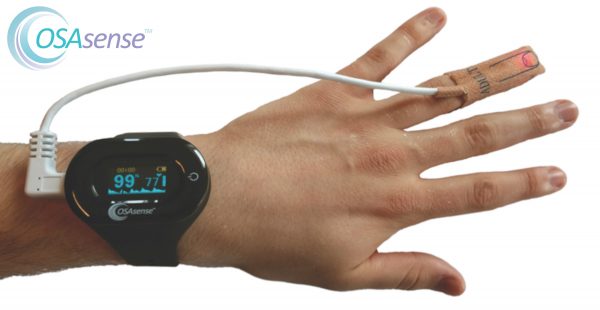
01/10/2018
New screening method for sleep apnea – De eerstelijns
OSAsense is an accessible screening tool for detecting obstructive sleep apnea syndrome (OSAS) in general practices that allows for rapid screening of patients and reduces unnecessary referrals to sleep centers by approximately eighty percent. The tool includes an online questionnaire and overnight saturation measurement with a watch-shaped saturation meter. The algorithm has high sensitivity (~100%) and specificity (>70%). It offers GPs a fast, patient-friendly, and cost-effective way to rule out sleep apnea, leading to better referrals and significant cost savings. GPs experience it as a valuable tool for more targeted referrals and faster clarity for patients, while minimizing the burden on GPs. The implementation pilot, launched May 1, already has participation from one hundred and thirty Twente GPs and is seen as a successful step toward wider deployment of OSAsense.
Read even more about OSAsense in the comprehensive article written by first line here.

31/08/2018
OSAsense measures sleep apnea risk in one night - RTV Oost
A Haaksberg invention involves a watch that measures oxygen levels during sleep to recognize sleep apnea. GP Kasper Veldhuis explains that the watch can indicate in one night whether there is a risk of sleep apnea. Recognizing sleep apnea is difficult because of vague symptoms, but the watch, which measures sleep for 6 to 8 hours with a patch on the finger, offers quick results. Although the watch does not provide a definitive diagnosis, it facilitates hospital referral or exclusion of sleep apnea, saving both time and costs for the patient, health care provider and insurer, said internist Rick Pleijhuis.
Read more about OSAsense here in the extensive article written by RTV Oost.
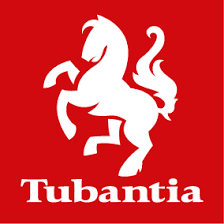
30/08/2018
Twente method should help patient with sleep apnea - Tubantia
The OSAsense is a low-threshold method for detecting sleep apnea, developed in Twente. It consists of a watch and a disposable sensor that measures oxygen levels. General practitioners, including Kasper Veldhuis, use it to perform faster and cheaper sleep apnea screening.
The watch is given to the patient, who sleeps with the sensor at night. After returning the watch, the general practitioner receives a detailed analysis, which can quickly determine whether there is a serious suspicion of sleep apnea. This avoids unnecessary wait times and costs when referring to a sleep center.
Sleep apnea can be effectively treated with solutions such as mouth braces or mouth caps, resulting in improved energy levels for the patient. The OSAsense method is expanding and is being presented at international conferences, such as the upcoming conference in England where Veldhuis will share his experiences with a thousand English general practitioners.
Read even more about the deployment of OSAsense in the article written by the Tubantia here.
Scientific articles
- Cost-Effectiveness Analysis of the DiagnOSAS Screening Tool Compared With Polysomnography Diagnosis in Dutch Primary Care 15/06/2018
- Validation of the oxygen desaturation index in the diagnostic workup of obstructive sleep apnea 21/03/2018
- Obstructive Sleep Apnea Syndrome in Company Workers: Development of a Two-Step Screening Strategy with a New Questionnaire 15/04/2016
- The use of oximetry and a questionnaire in primary care enables exclusion of a subsequent obstructive sleep apnea diagnosis 06/04/2016